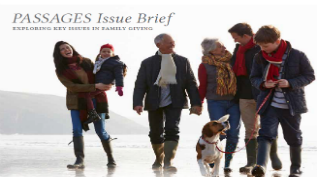Charting a Course to Impact Investing for The Russell Family Foundation

The idea of impact investing tends to divide people into two groups.
Some believe it is the best-of-both-worlds; a way to invest that bolsters their mission while generating competitive returns. Others fear that it is too-good-to-be-true; a distraction that cannot consistently produce returns that are comparable to traditional investing models.
In recent years, those who are bullish about impact investing seem to have outnumbered the bears. In 2016, the impact investing market in the U.S. was estimated at $8.72 trillion, or one-fifth of all investment under professional management [1]. By comparison, the market was “just” $3.74 trillion in 2012 [2]. As the field matures, product offerings will multiply, and even more investors will likely enter the space, begetting more growth and impact.
In the meantime, families looking to initiate or expand impact investing strategies should reflect on how deeply their philanthropic mission permeates their investment philosophy. They should ask how far they are willing to go to assemble an ecosystem of assets that support their impact goals.
Families looking to initiate or expand impact investing strategies should reflect on how deeply their philanthropic mission permeates their investment philosophy.
These are the types of deliberations that The Russell Family Foundation (TRFF) undertook as it deepened its commitment to impact investing. Over the past few years, the foundation has moved aggressively, coordinating its investments with its mission of promoting environmental sustainability, grassroots leadership, and peace. In 2013, their portfolio was 7% mission aligned. Today it stands at 80% mission aligned. During the same timeframe, the portfolio has outperformed its blended benchmark by 4 %.
Following are some key takeaways from their experience, which may prove helpful to others charting their own course.
Clarity of Intent
A successful impact investing strategy requires clarity of intent. Foundations must ask “Why do this?” and “How best to proceed?”
Knowing exactly what is in your portfolio is the first step. Could there be any holdings working at cross-purposes with the mission? When TRFF began asking these questions, the answers led to a relatively small divestment from 15 coal stocks. From there, the foundation ultimately decided to divest fully from all oil, gas and coal holdings in favor of specific themes such as forestry, agriculture, and clean technology.
Those decisions highlight another point: Having a deliberate, phase-based framework for ongoing divestment decisions is essential. For TRFF, that meant going after low hanging fruit first – such as investments that run counter to the mission. Once that phase was complete, the investment team could concentrate on longer-term strategic investment decisions that support specific goals. For example, TRFF has developed guidelines to identify capacity-building opportunities across three thematic areas:
- Equitable Communities: Investments that promote affordable housing, access to capital, low-impact development, food security and job creation.
- Responsible Economies: Investments that promote new economic development, entrepreneurship, minority/women/native-owned enterprises, and innovative partnerships.
- Sustainable Environments: Investments that promote sustainable land management, local agriculture and farming, climate change mitigation and adoption, and water quality improvements.
Reasonable Expectations
Another imperative for impact investors, especially those new to the field, is setting reasonable expectations. Benchmarks and other performance measures provide useful guidance, and equally important is having exposure to other impact investors.
TRFF has been very proactive. They have joined with other funders as a signatory to Divest-Invest Philanthropy in 2014 and are a member of both the Ceres Investor Network on Climate Risk and Sustainabilityand Carbon Disclosure Project. These industry groups and peer organizations provide valuable insights to help calibrate expectations and fine-tune strategy.
[1] The Forum for Sustainable and Responsible Investment – 2016 Report on US Sustainable, Responsible and Impact Investing Trends
[2] Impact Investing 101. The Calvert Foundation.

